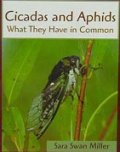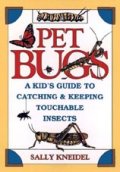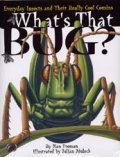Prime Time for Cicadas Additional Information
Share this:
- Share via email (Opens in new window) Email
- Click to share on Facebook (Opens in new window) Facebook
- Click to share on X (Opens in new window) X
- Click to share on Pinterest (Opens in new window) Pinterest
- Click to share on Reddit (Opens in new window) Reddit
- Share to Google Classroom (Opens in new window) Google Classroom
- Click to print (Opens in new window) Print
Information about the periodical cicada can be found at www.ummz.lsa.umich.edu/magicicada/Periodical/Index.html (University of Michigan Museum of Zoology).
For an introduction to periodical cicadas, go to www.ars.usda.gov/is/kids/insects/story11/cicada.html
For additional information about periodical cicadas, see www.eeb.uconn.edu/faculty/simon/cicada.htm (Chris Simon/University of Connecticut), www.cicadamania.org/ (Dan Century, Cicada Mania), www.cicadas.info/ (Cicadas.info), www.msj.edu/cicada/ (College of Mount St. Joseph), and www.cicadayear.com(CicadaYear.com).
To learn more about prime numbers and cicada life cycles, go to www.gsfc.nasa.gov/scienceques2003/20040507.htm (NASA Goddard Space Flight Center) and www.baltimoresun.com/news/health/
bal-te.ms.cicada10may10,0,3517208.story?coll=bal-health-headlines
(Baltimore Sun).
Milius, Susan. 2000. Cicada subtleties. Science News 157(June 24):408-410. Available at http://www.sciencenews.org/articles/20000624/bob8.asp.
Peterson, Ivars. 2003. Prime-time cicadas. Science News Online (June 21). Available at http://www.sciencenews.org/articles/20030621/mathtrek.asp.
For teaching resources on cicadas, go to www.msj.edu/cicada/teaching.html (College of Mount St. Joseph).
Books recommended by SearchIt!Science:
 |
Cicadas and Aphids: What They Have in Common — Sara Swan Miller
Published by Franklin Watts/Scholastic, 1999.
Have you ever heard of a homopteran? They are tiny creatures such as cicadas, treehoppers, aphids, and spittlebugs. Find out what they all have in common and why some of them may be eating your houseplants right now! Not only does this book show you where they fit into the scheme of the animal kingdom, it also brings you up close to 15 different kinds of special insects called homopterans. |
 |
Pet Bugs: A Kid’s Guide to Catching and Keeping Touchable Insects — Sally Kneidel
Published by John Wiley & Sons, 1994.
It looks like a tiny armored car tooling across the ground, but it’s really a pill bug. Pill bugs are easy to catch. Just pick them up and put them in a jar with a paper towel. Locate other harmless insects, catch them, and keep them as pets! This book discusses some of the behaviors and physical features of 25 insects and tiny creatures, including praying mantises, ladybugs, spittle bugs, and termites. Examples of chapter headings are “Bugs That Eat Other Bugs,” “Bugs That Look Like Something They’re Not,” and “Bugs That Have Special Tricks to Avoid Being Gobbled Up.” Black-and-white illustrations make it easy to identify the bugs. There’s an introduction with general principles about collecting bugs and how to avoid bugs that might be dangerous. |
 |
What’s that Bug? — Nan Froman
Published by Madison Press/Little, Brown & Co./AOL Time Warner, 2001.
When is a bug not a bug? True bugs have two sets of wings and other characteristics that distinguish them from other insects. What is a cricket, cockroach, or a katydid if they aren’t bugs? Learn about bugs and their characteristics the way scientists do. Using the classification system that the scientist Linnaeus developed almost 300 years ago, this book introduces budding bug watchers to nine fascinating families of the insect world. Every page is crawling with information accented with brilliantly colored illustrations that seem to almost fly off the page! |
Power Words
cicada An insect with a wide, flat head and transparent wings. Male cicadas make a loud buzzing sound with organs in their abdomens. Cicadas spend two or more years living underground as nymphs before emerging to live for a short time in trees as adults.
nymph An early stage in the development of an insect that does not become a pupa during its life cycle. Nymphs usually look like adults but are smaller, do not have full-grown wings, and cannot reproduce. Nymphs molt several times as they grow. The young of crickets, cockroaches, and termites are nymphs.
prime number A positive whole number that cannot be divided by any whole number except itself and 1 without leaving a remainder. Examples of prime numbers are 7, 23, and 37. The only even prime number is 2.
Copyright © 2002, 2003 Houghton-Mifflin Company. All rights reserved. Used with permission.
